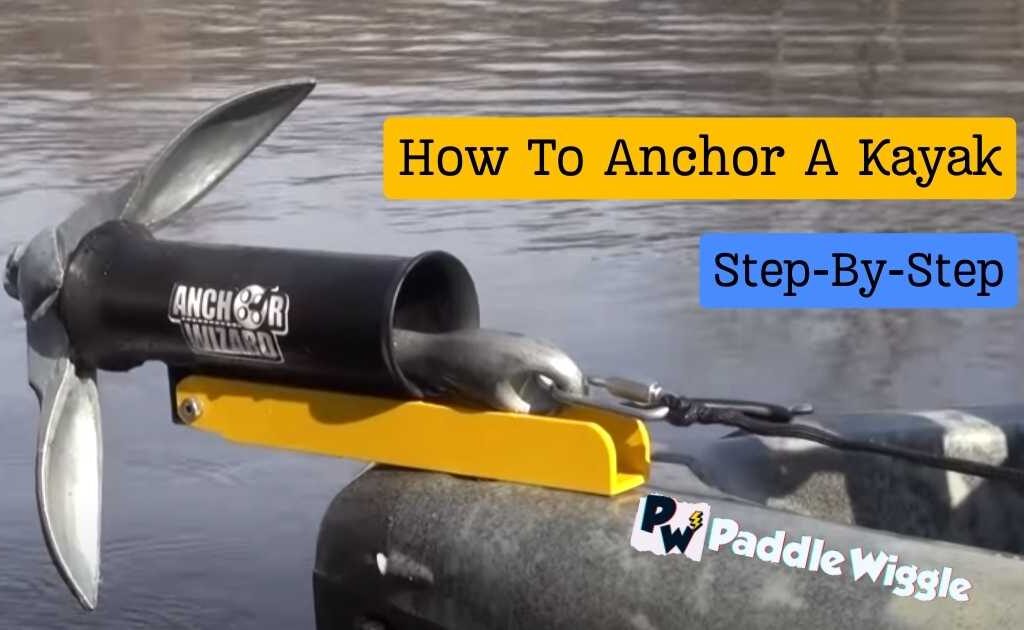Under the shimmering sun and lapping waters, kayakers seek solace amidst nature’s embrace. Yet, for those wrestling with unruly knees, the trance is but a fleeting dream – where getting out of a kayak appears to be an arduous struggle for paddlers with bad knees.
Getting out of a kayak with bad knees can be tough because it involves movements that strain sensitive joints. Bending and kneeling during the exit process can cause discomfort and pain. The small space inside the cockpit makes it hard for people with limited mobility to move comfortably.
Furthermore, for senior paddlers or those with physical limitations, getting out of a kayak may seem a disaster!
So, if you’re finding yourself stuck in a kayak with bad knees, there are several easy ways to get out.
In this guide, behold the art of the uncomplicated as we share the three easiest techniques for exiting a kayak with bad knees. Additionally, we’ll discuss foot placement to minimize knee strain when kayaking.
Let’s get started.
Contents
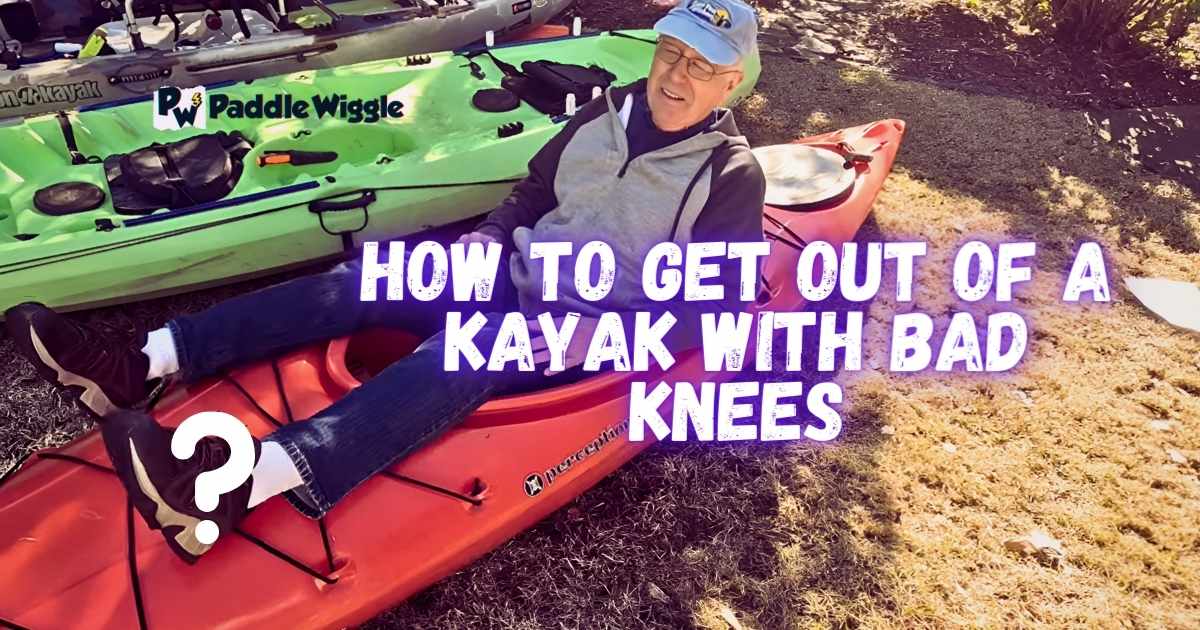
Kayak Exit With Bad Knees: A 5 Steps Guide
Exiting a kayak with bad knees can be manageable. But with the right techniques and a little bit of practice, you can smoothly do this without aggravating your knees.
This step-by-step guide will equip you with the knowledge and skills to make your kayak exits pain-free and enjoyable.
Follow this step-by-step guide to learn how.
Step 1: Positioning Your Kayak Near A Stable Surface For Support
To begin, find a stable surface near the water where you can position your kayak. This could be a dock, a flat rock, or even the shore itself. Having something sturdy nearby will provide support as you transition from your kayak to solid ground.
Step 2: Placing One Leg Outside The Kayak While Keeping The Other Inside
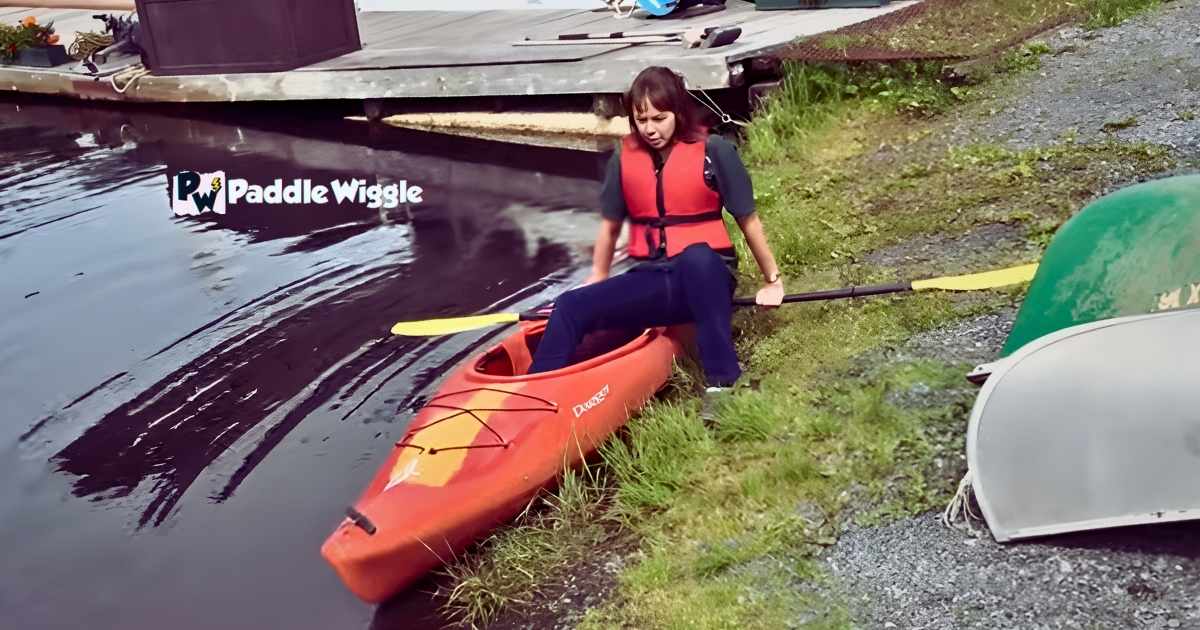

Once you’ve positioned your kayak near a stable surface, it’s time to prepare for exiting. Start by placing one leg outside the kayak while keeping the other leg inside. This will help maintain stability and prevent any unnecessary strain on your knees.
Step 3: Gradually Shifting Your Weight Onto The Leg Outside And Pushing Yourself Up Using Your Arms
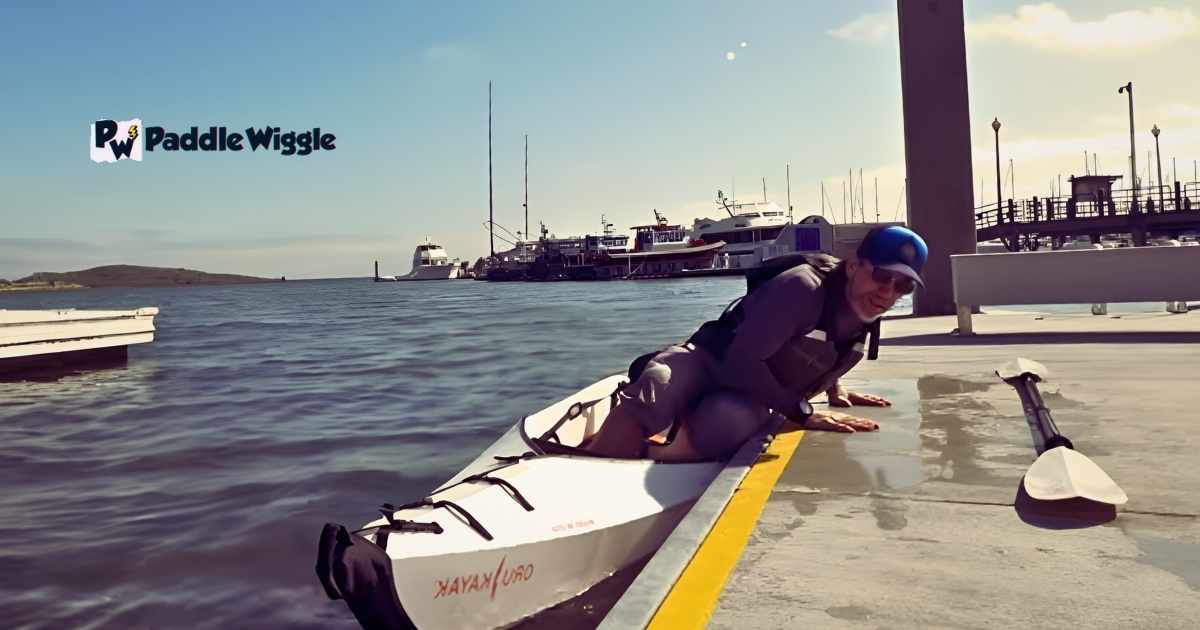

With one leg outside the kayak, gradually shift your weight onto that leg while using your arms for support. Lean slightly towards the stable surface as you push yourself up using your arms. This motion will help take some of the pressure off your knees while allowing you to rise from a seated position.
Step 4: Take Time And Be Steady
Remember to take it slowly and steadily as you push yourself up with your arms. Rushing through this process may lead to imbalance and potential injuries. Focus on maintaining control over each movement as you transition from sitting in the kayak to standing on solid ground.
Step 5: Stretch And Rest
After successfully exiting your kayak, take a moment to stretch your legs and knees. Gently stretch your calf muscles and perform knee flexion and extension exercises to promote flexibility and relieve any tension.
The 3 Other Methods To Get Out Of A Kayak With Bad Knees
Living with bad knees can make certain activities challenging, but it doesn’t mean you have to give up on your favorite hobbies, like kayaking.
With the right techniques and tools, you can comfortably get out of a kayak without putting unnecessary strain on your knees.
Here are the three easiest ways that we promised!
Try The “Side-Saddle” Method
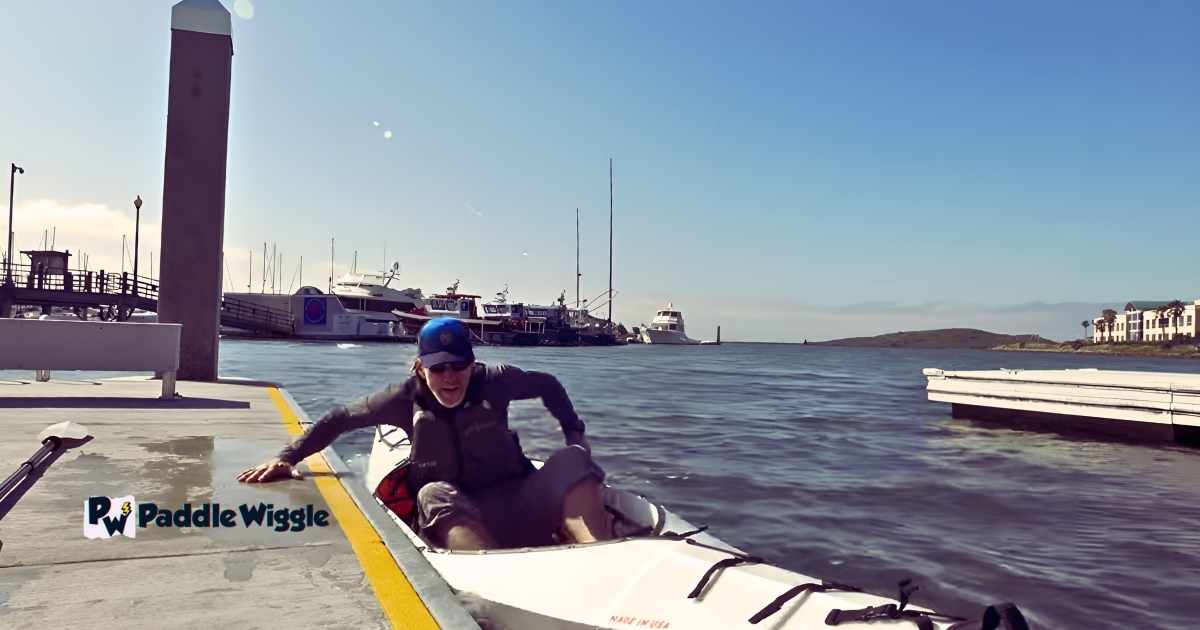

One technique that works well for individuals with bad knees is the “side-saddle” method. This involves swinging both legs out together, keeping them outside of the kayak while maintaining a seated position. Here’s how you can execute this method:
- Position yourself towards one side of the kayak.
- Place both hands on the opposite side of the kayak to provide stability.
- Swing both legs out together, ensuring they are outside of the kayak.
- Slowly stand up using your arms and leg strength until you are in an upright position.
The side-saddle method allows for a controlled exit from the kayak while minimizing stress on your knees.
Attempt The “Knee Pivot” Technique
Another effective technique is called the “knee pivot.” This method involves placing one foot on the ground while pivoting on your knee to maneuver out of the kayak smoothly. Follow these steps to try it out:
- Slide one leg out of the kayak so that your foot touches the ground.
- Use your grounded foot as leverage and support as you pivot your body towards that side.
- Gradually lift yourself up using both arms and let your other leg follow suit until you are standing.
By utilizing this technique, you can distribute weight evenly between your grounded foot and arms, reducing strain on your knees during exit.
Consider Using A Kayak Assist Bar Or Dock
For added stability and assistance when getting out of a kayak, consider using a kayak assist bar or dock. These tools provide extra support and leverage, making it easier for individuals with bad knees to exit the kayak safely. Here are some options to explore:
- Kayak Assist Bar: Attachable to the side of your kayak, this bar offers a sturdy handhold for stability during entry and exit.
- Dock: If available, docking your kayak next to a stable platform can provide additional support as you transition in and out of the vessel.
Tips For Hassle-Free Kayak Exit With Bad Knees
Kayaking is an exhilarating outdoor activity that allows you to explore scenic waterways and enjoy nature. However, getting out of a kayak can be challenging and painful if you have bad knees. Thankfully, kayak exit devices are available in the market that can make the process easier and more comfortable.
Utilize Kayak Exit Devices Like Paddle Floats Or Outriggers
One effective way to make your kayak exit smoother is by using paddle floats or outriggers. Paddle floats are inflatable devices that attach to your paddle, creating extra buoyancy on one side of the kayak. This added stability helps prevent tipping as you transition from sitting to standing position.
On the other hand, outriggers are attached to the sides of the kayak and provide lateral support, making it easier for individuals with bad knees to maintain balance during exit.
Research Different Options And Get What Suits You Best
It’s important to do your research and consider various options available in the market. Different devices may offer unique features or cater to certain kayaks or knee conditions. By exploring different products and reading customer reviews, you can find one that suits your needs and provides maximum stability during exiting.
To help you get started with your research, here are some popular kayak exit devices:
- YakGear Paddle Float: This inflatable float attaches securely to your paddle shaft and provides excellent stability during exits.
- Scotty Kayak Stabilizer System: Designed for those who require additional support due to knee issues, this system includes outriggers that enhance stability when entering or exiting a kayak.
- Hobie Sidekick AMA Kit: Ideal for Hobie kayaks, this kit offers easy installation of outriggers for improved balance and stability.
Choosing The Right Launch And Exit Spots
Finding the right launch and exit spots is crucial when you have bad knees and want to get out of a kayak safely. Here are some tips to help you choose the best locations for a smooth experience.
Look For Launch Spots With Easy Access To Water
When scouting for a suitable launch spot, it’s essential to consider easy access to the water. Avoid areas with steep slopes or rocky terrain that could make it challenging to enter your kayak comfortably. Instead, look for spots where you can easily glide into the water without putting excessive strain on your knees.
Find locations with gradual slopes or sandy beaches that allow for a gentle entry into the water. This way, you can minimize any potential discomfort or instability while getting in your kayak. A good idea is to research local kayaking spots to find the best spot for launching your kayak.
Find Exit Spots That Offer Stable Ground Or Platforms
Another crucial aspect to consider is finding exit spots with stable ground or platforms. Look for areas near docks, piers, or solid ground where you can safely get out of your kayak, especially if you have bad knees. Having something sturdy to hold onto as you stand up will give you extra support and stability during the process.
Guide To Proper Foot Placement For Comfortable Exits
Maintaining proper foot placement is crucial for comfortable exits when you have bad knees. By following these guidelines, you can ensure that your feet are positioned correctly throughout your kayaking journey, reducing strain and discomfort on your knees.
Foot Placement For Kayaker With Bad Knees
To begin with, it’s important to maintain proper foot placement from the moment you get into your kayak until the time you exit. Avoid crossing or bending your legs excessively while paddling, as it can strain your knees and cause discomfort.
Instead, aim to keep your feet parallel and comfortably positioned throughout the entire kayaking experience. This helps distribute pressure evenly across both knees and reduces the risk of worsening any existing knee issues.
Ensure you have the right equipment and padding in place to achieve proper foot placement. A well-padded seat provides support for your buttocks and lower back, helping you sit comfortably without straining your knees. Use adjustable foot braces or pegs to customize their position for comfort.
Opt For Butt First
When it comes to exiting a kayak with bad knees, the smart choice is to go out butt first. Instead of attempting to stand up directly from a seated position inside the kayak, this technique offers a safer and more comfortable alternative.
Here’s how to perform The Butt First Exit:
Once you’re ready to leave the kayak, turn your body towards the side you wish to exit from. Place your hands on the top of the kayak for stability. Next, carefully swing your legs out to the side, allowing your feet to touch the ground or a stable surface outside the kayak. With your feet firmly planted, use your hands to push yourself up, lifting your body out of the kayak in a controlled manner.
By opting for the butt-first approach, you reduce the strain on your knees and make the exit process smoother. This method ensures you maintain your balance and stability while exiting, lessening the risk of unnecessary strain or discomfort on your knees.
Choose Sit-On-Top Kayaks For Easy Entry And Exit
Consider sit-on-top kayaks if you have bad knees, as they offer a hassle-free way to get in and out of the kayak.
Unlike sit-inside kayaks, where you have to squeeze your legs into the cockpit, sit-on kayaks let you step onto the platform and sit comfortably.
With sit-on-top models, you won’t have to worry about bending or flexing your knees too much during entry or exit, which can cause discomfort.
You can swing your legs over the sides without putting extra strain on your knees. Enjoy the freedom of easy access and a more comfortable kayaking experience with sit-on-top kayaks!
Effective Ways To Minimize Strain On Knees When Kayaking
Kayaking is a fantastic outdoor activity that allows individuals to connect with nature while engaging in physical exercise. However, for those with bad knees, the repetitive motion and strain involved in kayaking can be challenging.
Choose Calm Waters Or Slow-Moving Rivers For Gentle Paddling
Choosing the right location is crucial. Opting for calm waters or slow-moving rivers can significantly reduce the impact on your joints. These serene water bodies provide a smoother paddling experience, minimizing any unnecessary strain on your knees.
Consider these options for gentle paddling:
- Opt for kayaking in calm waters or slow-moving rivers.
- Serene locations provide a smoother paddling experience.
- Reduces impact on your knee joints.
Consider Shorter Trips To Minimize Strain On Knees
If you have bad knees but still want to indulge in kayaking adventures, consider planning shorter trips. By reducing the duration of each outing, you can minimize stress on your joints and make the activity more manageable.
Here are some tips for planning shorter kayak trips:
- Start small: Begin with brief excursions close to shore until you build up endurance.
- Time management: Allocate a specific timeframe for each trip so that you don’t overexert yourself.
- Multiple breaks: Take regular breaks during longer outings to give your knees time to rest.
Shorter trips not only help alleviate strain on your knees but also allow you to fully enjoy the beauty of nature without discomfort hindering your experience.
Kayak Parallel To Shallow Water Or Shoreline
Try kayaking parallel to shallow water or the shoreline to reduce the impact on your knees. This technique ensures that you are paddling in areas with lesser depth, minimizing strain on your joints.
Here’s how to kayak parallel to shallow water or shoreline:
- Find suitable areas: Look for sections of the water body where the depth is shallow.
- Maintain distance: Keep a safe distance from the shore or shallow areas while paddling.
- Adjust your paddle strokes: Modify your paddling technique to maintain a consistent distance from the shoreline or shallow water.
Strengthen Leg Muscles
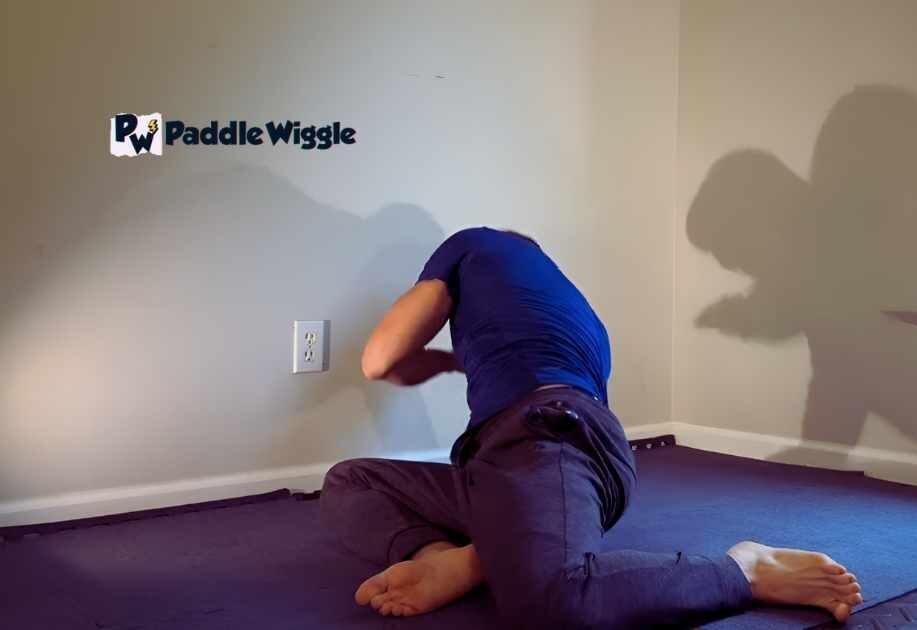

Engaging in regular leg exercises can significantly contribute to knee health during kayaking. Strengthening your leg muscles provides better support and stability, reducing the risk of knee discomfort.
Incorporate exercises like squats, lunges, and leg lifts into your routine to improve overall leg strength and enhance your paddling experience.
Guide To Choosing A Knee-Friendly Kayak: A Long-Term Solution
If you have bad knees and still want to enjoy kayaking, selecting the right kayak can make all the difference. In general, wider sit-on kayaks are comparatively good for knees. Additionally, there are features like adjustability of seating and footrest.
Here are some key factors to consider when selecting a knee-friendly kayak.
Cockpit Design
The design of the kayak’s cockpit plays a pivotal role in determining the ease of entry and exit, which directly impacts knee comfort.
The design of the kayak’s cockpit is essential for easy entry and exit, which affects knee comfort. It’s best to choose kayaks with spacious and open cockpits.
Sit-on-top kayaks are especially good for this because they have a larger, open seating area, making it easier to get in and out of the kayak. This design reduces the need to bend and twist, which is better for your knees.
Sit-on-top kayaks also offer a more enjoyable kayaking experience as you feel less confined compared to traditional cockpits.
Seating Comfort
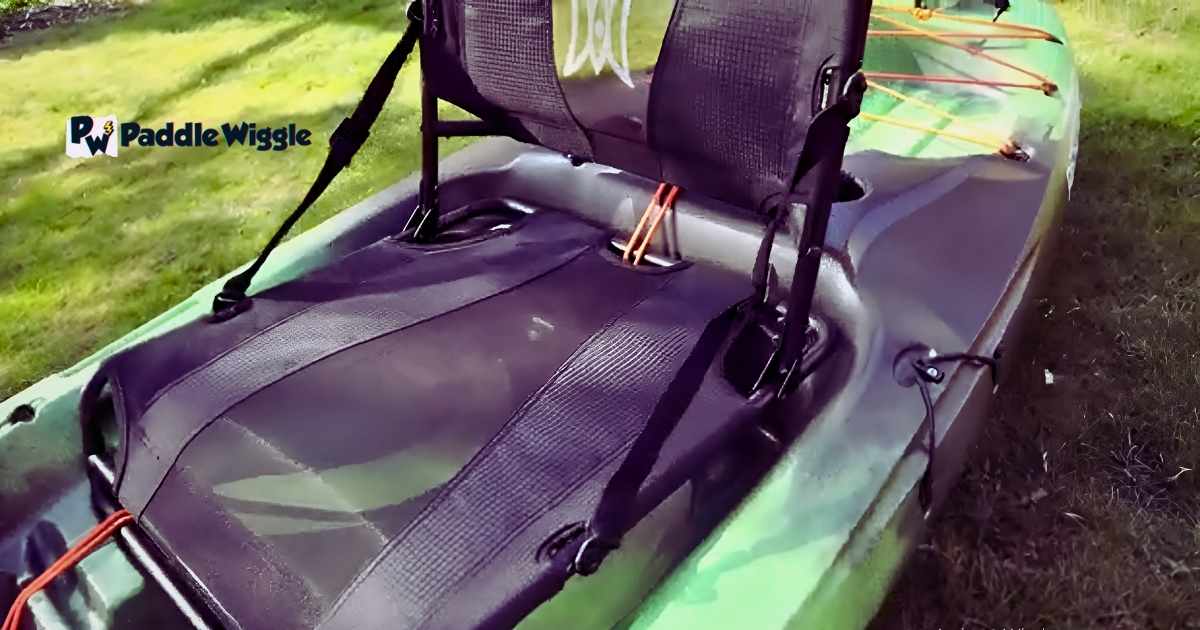

Having a comfortable and supportive seat is crucial, especially if you have knee issues. So, look for kayaks with well-padded and adjustable seats that provide back support and help you maintain proper posture.
A comfortable seat should give enough support to your lower back, reducing pressure on it and easing the strain on your knees. Also, make sure the kayak has enough legroom for your feet to move freely.
Having adequate legroom prevents discomfort and cramping during long kayaking trips.
Check the following factors to determine whether a seat is comfortable or not:
- Adjustable to customize to your body shape and size
- Provides ample lumbar support for your lower back
- It helps maintain proper posture during paddling
- Reduces pressure on the lower back and knees
- Offers ergonomic contours for a natural and cozy fit
Stability And Tracking
Stability and tracking are important for a knee-friendly kayaking experience. Stable kayaks with a well-balanced design make it easier to keep your balance, reducing stress on your knees. Good tracking means the kayak moves smoothly through the water, reducing unnecessary knee movements while paddling. Choosing a kayak with both stability and tracking ensures a more enjoyable and knee-friendly time on the water.
Footrest Adjustability
Don’t forget about adjustable footrests when looking for a knee-friendly kayak. Being able to customize the footrest position helps you find a comfortable and supportive foot placement. Proper foot positioning reduces knee strain while paddling, making the experience smoother and more enjoyable. Adjustable footrests can be tailored to fit your leg length, enhancing overall comfort and reducing the risk of knee discomfort.
Weight And Portability
Considering the weight and portability of the kayak is essential, especially if you’ll be moving it often. Lightweight kayaks are easier to handle and transport, making your kayaking adventures more convenient. You can even transport a lighter kayak without any roof rack, or carry it to the water’s edge. Portability allows you to focus on enjoying paddling without the added burden of a heavy kayak.
Top 3 Kayaks For People With Bad Knees
Kayaking is a fantastic outdoor activity that lets you connect with nature and explore peaceful waterways. But for people with knee problems, the repetitive movements and strain of kayaking can be challenging.
That’s why choosing a kayak that’s kind to your knees is crucial. So, we’ve included the three best kayaks for paddlers with bad knees.
Here, we’ll explore the top three knee-friendly kayaks: Vibe Kayaks Sea Ghost 130, Old Town Sportsman 106, and Perception Pescador Pro 12.0.
These kayaks are known for their comfort and performance on the water, making them great choices for those with knee concerns.
Let’s dive in and find the perfect kayak for you!
#1 Vibe Kayaks Sea Ghost 130


The Vibe Kayaks Sea Ghost 130 is one of the best choices for kids and adults with bad knees who want to go kayaking comfortably. It has a super comfy seat that supports your back and takes the pressure off your knees during long trips.
The kayak’s wide design makes it stable on the water, so you don’t have to worry about tipping over and hurting your knees. You can adjust the footrests to fit your feet perfectly, which helps reduce knee tiredness.
Plus, it has lots of space to store your stuff without making you feel cramped.
Here’s what makes the difference:
- Features a deluxe Vibe Hero seat that supports your lower back excellently, reducing pressure on your knees during long paddling sessions.
- Wide hull design ensures great stability, reducing the need for constant balance adjustments and easing knee strain.
- Adjustable foot braces allow you to find a comfortable foot position, reducing knee fatigue on longer trips.
- It offers ample storage space for your gear, making your journey more convenient.
- Tracks well in the water, making paddling more efficient and reducing unnecessary knee movements.
- Versatile for different water conditions and user-friendly for all paddlers.
#2 Old Town Sportsman 106
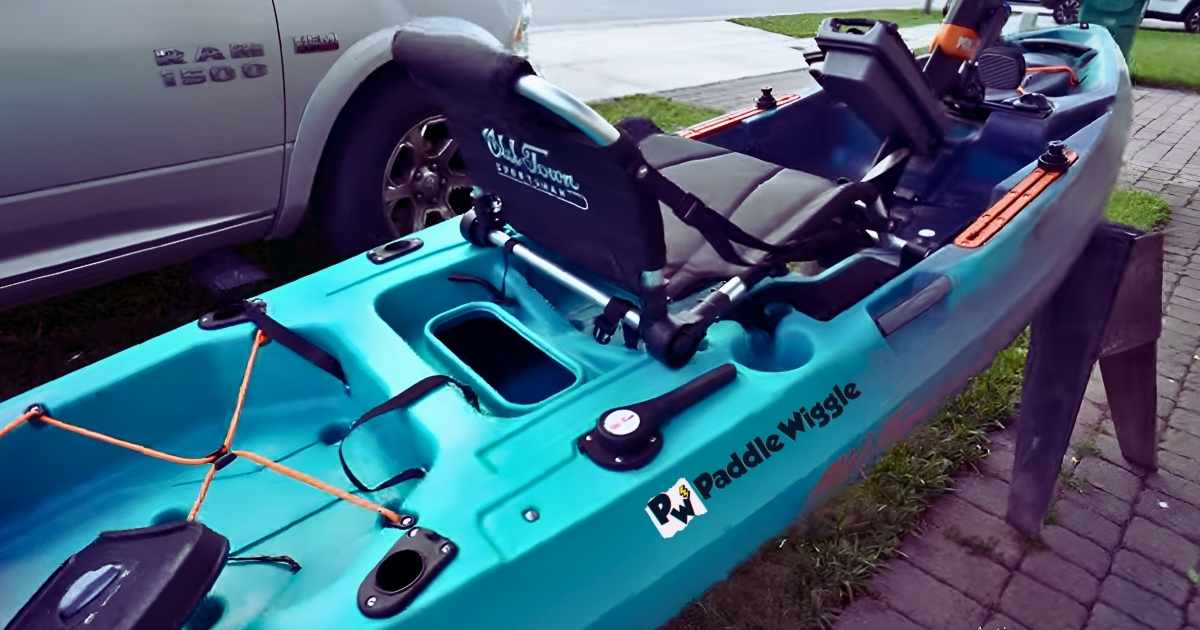

The Old Town Sportsman 106 is next.
It’s a top-rated kayak known for its knee-friendly design and versatility, making it an excellent choice for individuals with knee issues. Its user-friendly features and design cater to paddlers looking for a comfortable experience on the water.
Here are a few notable features of the kayak:
- Equipped with an ultra-comfortable ACS2 seat that provides exceptional lumbar support, taking pressure off your lower back and knees.
- Adjustable footrests allow you to find the right foot position for less knee strain and increased comfort.
- Sturdy construction ensures stability on the water, enhancing knee comfort during paddling.
- Designed with fishing-friendly features, it caters to anglers who enjoy combining paddling with fishing.
- Great tracking capabilities and adaptability to various water conditions for a smooth and knee-friendly ride.
- Convenient features like cup holders and storage hatches enhance your paddling experience.
#3 Perception Pescador Pro 12.0


The Perception Pescador Pro 12.0 is the final one on the list.
It’s a highly regarded kayak known for its knee-friendly features and durability. This sit-on-top kayak is designed to provide maximum comfort and performance for paddlers with knee issues.
Here are a few exceptional features of the kayak:
- Ergonomic Seating: The Pescador Pro 12.0 has an adjustable seat, providing excellent lower back support and reducing knee strain.
- Spacious Cockpit: It offers a roomy cockpit that allows you to find a comfortable sitting position for better foot placement and knee health.
- Efficient Tracking: The Pescador Pro 12.0 tracks well in the water, offering a smoother, more comfortable paddling experience with minimal knee strain.
- Adaptability: Whether you’re paddling in lakes or rivers, this kayak’s versatility makes it suitable for all skill levels, ensuring a knee-friendly journey in any water setting.
Learn More
Is It Difficult To Get Out Of A Kayak With Bad Knees?
Yes, getting out of a kayak can be challenging for individuals with bad knees due to the bending and kneeling involved, which can strain the knees.
Can I Still Kayak If I Have Bad Knees?
You can still enjoy kayaking with bad knees by following the techniques and using equipment that minimizes strain on your knees. By implementing the strategies mentioned in this guide, you can make kayaking a comfortable and enjoyable activity.
What Type Of Kayak Is Best For Individuals With Bad Knees?
Look for kayaks that offer ample legroom and adjustable seating options. Sit-on-top kayaks or models specifically designed for individuals with knee issues are often more suitable.
Can Kayak Design Impact Knee Comfort During Exits?
Yes, the kayak’s cockpit design and seating can play a crucial role in providing knee-friendly exits. Look for spacious and open cockpits for easier entry and exit.
Are There Any Specific Devices That Can Assist With Kayak Exits For People With Bad Knees?
Yes, various devices, such as paddle floats or outriggers, provide stability during exiting. These tools can be helpful in minimizing strain on your knees.
Final Word
Conquering the challenge of getting out of a kayak with bad knees may initially feel daunting, but fear not! By implementing effective strategies and following proper techniques, you can minimize strain on your knees and make the process more comfortable. Remember to choose a knee-friendly kayak. And utilize helpful equipment to enhance your paddling experience.
If you experience severe knee pain, consult your medical advisor for personalized guidance. Always prioritize your comfort and well-being, so you can enjoy the joys of kayaking while caring for your knees.

